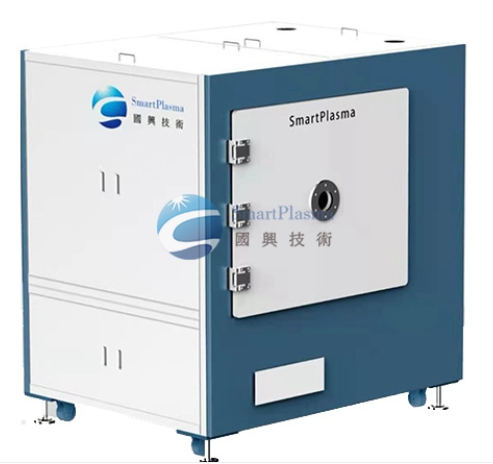Welcome to Yangzhou Guoxing Technology Co., Ltd [official website]

What are the advantages of using plasma cleaner [Plasma]? 1. Plasma cleaning machine can not use harmful solvents, so no harmful substances will be produced after cleaning. This effectively solves the problem of environmental protection. Plasma equipment can be classified as a green cleaning. 2. The product after being cleaned by the plasma equipment is already very dry, so the next process can be carried out without drying. 3. Plasma cleaning machine is a plasma generated with high frequency in the radio wave range. It is different from the direct light rays such as lasers that we usually come into contact with. Because its directionality is not strong enough, it can penetrate into the fineness of the object. The holes and recesses complete the cleaning task, so there is no need to worry about the shape and angle of the objects being cleaned. Of course, it is easier to achieve better results with vacuum plasma equipment. 4. The cleaning process of the plasma cleaning machine can be completed within a few minutes. It has the characteristics of high efficiency and high speed cleaning. 5. Plasma equipment can perform plasma surface treatment for different substrates, different shapes, regardless of the object to be processed, whether it is semiconductor, oxide, or polymer materials. It can also use selective materials for overall or complex structures, and can also achieve cleaning treatments such as partial structures.

Cleaning comparison between plasma equipment and wet cleaning equipment: [Plasma] First, let’s understand the cleaning advantages of plasma equipment. The cleaning advantage of plasma surface treatment equipment is that the objects after cleaning are dry, so it does not need to be dried again, and the next step can be performed. Process. We can also design our plasma equipment process as an on-line cleaning method, which not only saves costs, but also saves time and effort, and improves production efficiency. The second advantage of plasma equipment cleaning is that it is pollution-free, free of harmful substances, and avoids many problems that are more likely to occur like wet cleaning. Plasma surface treatment machine cleaning can improve the cleaning efficiency, achieve surface modification, and improve product performance and yield. Generally speaking, general workpieces can be cleaned in a few minutes without any cumbersome process , As long as you can operate the plasma equipment. Plasma cleaning [Plasma] needs some restrictive factors in the application, mainly in the following points: This method cannot be used to remove the cutting powder on the surface of the object, which is especially obvious when cleaning the grease on the metal surface. Practice has proved that it cannot be used to clear thick oil stains. Although using plasma to clean a small amount of oil stains attached to the surface of the object has a good effect, the removal effect of thick oil stains is often not good. On the one hand, it is used to remove the oil film, and the treatment must be extended. In the meantime, the cleaning cost is greatly increased. On the other hand, it may cause the unsaturated bonds in the molecular structure of the grease stain to polymerize, coupling and other complex reactions in the process of contact with the thick grease stain to form a harder resin. It is related to the three-dimensional network structure. Once this type of resin film is formed, it will be difficult to remove. Therefore, plasma is usually used to clean oil stains with a thickness of less than a few microns. The discharge principle of plasma generator [Plasma]: The use of an external electric field or high-frequency induction electric field to make gas conduction is called gas discharge. Gas discharge is one of the important means to generate plasma. The electrons in the partially ionized gas accelerated by the applied electric field collide with neutral molecules, and the energy obtained from the electric field is transferred to the gas. Elastic collisions between electrons and neutral molecules lead to an increase in molecular kinetic energy, which is manifested as an increase in temperature; inelastic collisions lead to excitation (the electrons in molecules or atoms transition from low energy levels to high energy levels), dissociation (molecules decompose into atoms) or Ionization (the outer electrons of molecules or atoms change from bound state to free electrons). High-temperature gas transfers energy to the surrounding environment through conduction, convection and radiation. Under steady conditions, the input energy and loss energy in a given volume are equal. The rate of energy transfer between electrons and heavy particles (ions, molecules, and atoms) is proportional to the collision frequency (the number of collisions per unit time).

In dense gas, collisions are frequent, and the average kinetic energy (ie temperature) of the two types of particles can easily reach equilibrium. Therefore, the electron temperature and the gas temperature are approximately equal. This is the normal situation when the pressure is above one atmosphere, and is generally called thermal plasma. Or balance the plasma. Under low pressure conditions, there are few collisions, and the energy obtained by the electrons from the electric field is not easily transferred to the heavy particles. At this time, the electron temperature is higher than the gas temperature, which is usually called cold plasma or nonequilibrium plasma. The principle of plasma treatment [Plasma]: Plasma is a state of existence of matter. Generally, matter exists in three states: solid, liquid, and gas, but in some special cases, there is a fourth state, such as the atmosphere of the earth. Substances in the middle ionosphere. The following substances exist in the plasma state: electrons in a state of high-speed motion; neutral atoms, molecules, and groups of atoms (radicals) in an activated state; ionized atoms and molecules; unreacted molecules, atoms, etc., but the substance is in the whole The electrical neutral state is still maintained. Plasma processing technology is a specific application of the special properties of plasma: the plasma processing system generates plasma by setting two electrodes in a sealed container to form an electric field, and a vacuum pump is used to achieve a certain degree of vacuum. As the gas becomes thinner and thinner, the molecular spacing And the free movement distance of molecules or ions is getting longer and longer. Under the action of electric field, they collide to form plasma. These ions are very active and their energy is enough to break almost all chemical bonds and cause chemical reactions on any exposed surface. , Plasma of different gases has different chemical properties. For example, plasma of oxygen has high oxidizing property and can oxidize photoresist to react to generate gas, so as to achieve the cleaning effect; plasma of corrosive gas has good various properties. Anisotropy, so that it can meet the needs of etching. Glow is emitted when plasma treatment is used, so it is called glow discharge treatment. The mechanism of plasma treatment mainly relies on the "activation" of the active particles in the plasma to achieve the purpose of removing stains on the surface of the object. In terms of reaction mechanism, plasma cleaning usually includes the following processes: inorganic gas is excited into a plasma state; gas phase substances are adsorbed on the solid surface; adsorbed groups react with solid surface molecules to form product molecules; product molecules resolve to form a gas phase; reaction The residue is off the surface. The biggest feature of plasma cleaning technology is that regardless of the type of substrate to be processed, it can be processed. It can treat metals, semiconductors, oxides and most polymer materials, such as polypropylene, polyester, polyimide, and polychloride. Ethane, epoxy, and even polytetrafluoroethylene can be handled well, and can be used to clean the whole, part, and complex structures.



Consult now